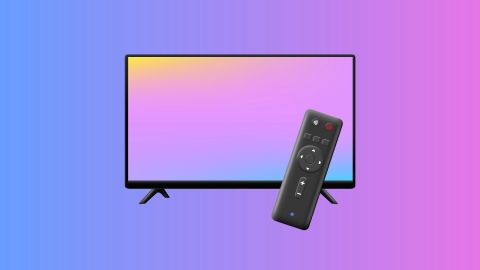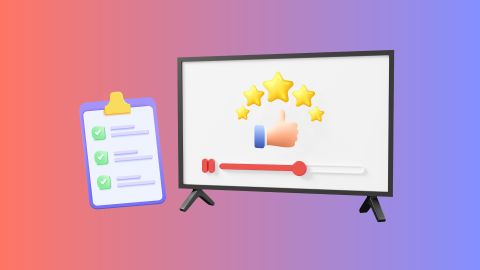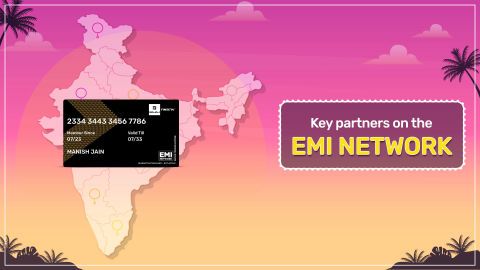Both Dolby Digital and DTS audio are surround sound formats. They make films, music, and games more immersive by sending sound to multiple speakers instead of just one. Dolby Digital is widely used in streaming platforms and cinemas, while DTS is known for offering higher bitrates, which can mean more detailed sound. Both aim to give you a lifelike listening experience. The choice depends on your TV, sound system, and personal preference.
Why spend more when you can save more? Use the Maha Bachat savings calculator to combine dealer offers, brand offers, and Bajaj offers to bring down your purchase cost. Calculate your extra savings today!
Key technical differences
The following table highlights the main technical differences between Dolby Digital and DTS audio:
Feature
|
Dolby Digital
|
DTS
|
Audio compression
|
Uses higher compression to reduce file size for smooth playback on many devices
|
Uses lower compression, giving higher bitrates and richer sound
|
Channel support
|
Supports 5.1 and 7.1 surround sound, suitable for most setups
|
Supports 5.1 and 7.1 surround sound with more refined audio details on compatible setups
|
Compatibility
|
Works on most streaming platforms
|
Performs best on physical media like Blu-ray discs
|
Bitrate
|
Up to 640 Kbps, good for streaming and casual viewing
|
Up to 1.5 Mbps, delivering clearer and more detailed sound
|
Use case
|
Suited for streaming and casual TV watching
|
Ideal for dedicated home theatre setups
|
When selecting larger screens, like a 55 inch TV or a compact LG 32-inch Smart TV , understanding these differences will help you choose the best audio experience for your space.
Pros and cons of each format
Dolby Digital
Pros: Works on most devices and streaming platforms, efficient compression for smaller files, reliable performance.
Cons: Slightly lower bitrate than DTS, which may reduce some audio detail.
DTS
Pros: Higher bitrate gives richer sound, ideal for Blu-ray discs, immersive surround experience.
Cons: Less support on streaming platforms, requires compatible hardware for best performance.
For everyday viewing, a TV with Dolby Digital is sufficient. DTS is better suited for advanced home theatre setups.
Choosing based on your audio setup
Home theatres: DTS is ideal for multiple speakers and AV receivers, using its high bitrate fully.
Streaming platforms: Dolby Digital is widely supported by Netflix, Prime Video, and Disney+.
Smaller rooms: Dolby Digital works well with basic soundbars or smaller systems.
Physical media enthusiasts: DTS is best for Blu-ray discs and lossless audio formats.
Compatibility: Older TVs or sound systems may work better with Dolby Digital.
Consider your content preferences and hardware when selecting the right format.
Which format offers better sound quality?
Both Dolby Digital and DTS deliver excellent audio but shine in different scenarios. Dolby Digital uses efficient compression, giving consistent performance across devices. It is ideal for streaming on Netflix or Amazon Prime, balancing clarity and file size for smooth playback even on limited hardware.
DTS uses a higher bitrate, retaining more audio data. This creates richer, more detailed sound, especially with Blu-ray discs. Large home theatre setups benefit from DTS with precise sound placement and clearer dynamics.
Sound quality also depends on your audio equipment. Premium soundbars or surround systems can make DTS sound more immersive. For built-in TV speakers or basic setups, Dolby Digital remains reliable and efficient.
For a balanced experience, consider TVs with advanced audio features, such as the Sony TV range, which supports both formats for optimal sound.
Get electronics and appliances on Easy EMIs with Bajaj Finserv
Upgrading your home with the latest electronics and appliances is now easier and more affordable with Bajaj Finserv’s flexible financing options and latest offers. You can also maximise your savings by using the Maha Bachat Savings Calculator—a smart tool that combines brand offers, dealer offers, and EMI offers, all in one place, helping you lower the overall cost while still paying in small, bite-sized instalments. Follow these steps to get started:
Explore products on Bajaj Mall: Browse a wide range of electronics and appliances from trusted brands. Compare features like energy ratings, storage capacity, performance settings, and design to choose the right product for your home.
Visit a partner store: Once you shortlist a model, step into any of Bajaj Finserv’s 1.5 lakh partner stores across 4,000 cities in India. See the product in person, talk to experts, and make a confident decision.
Choose the Easy EMI Loan option: At checkout, select the Bajaj Finserv Easy EMI Loan. Avail financing of up to Rs. 5 lakh and split the cost into convenient monthly instalments. Some products also come with a zero down payment option.
Check your loan eligibility online: Plan better by checking your loan eligibility in minutes. Simply enter your mobile number and OTP to know your pre-approved limit.
Use the EMI Network Card for purchases up to Rs. 3 lakh: Already own the Bajaj Finserv EMI Network Card? Use it for instant, paperless checkout and convert your purchases of up to Rs. 3 lakh into Easy EMIs.
TV by brand
TV by features
TV by size
TVs by brands
TVs by budget









